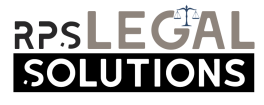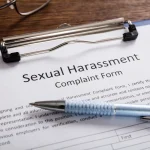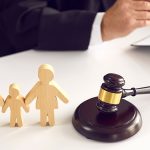Advocating for Victims of Pedestrian Accidents Across Shreveport
When a person on foot is suddenly struck by a vehicle, the aftermath can feel both disorienting and urgent: medical decisions must be made, bills arrive, and critical evidence risks disappearing in days. This article maps out what matters most for injured pedestrians in Shreveport, from pinpointing the causes of a collision to documenting injuries and pursuing full compensation for present and future needs. You will find an explanation of how lawyers establish fault, work with medical professionals to prove damages, and structure settlements that truly support recovery. Throughout, we underscore how strong advocacy helps stabilize a person’s health, finances, and day-to-day life after a crash. Firms like Rice & Kendig and other Shreveport Pedestrian Accident Attorneys bring local knowledge, investigative resources, and a medical-forward approach that can make a measurable difference in outcomes.
Identifying Causes and Liable Parties in Pedestrian Collisions
Pedestrian collisions in Shreveport often share a few recurring causes: distracted driving, speeding on neighborhood streets, and drivers failing to yield during left turns are frequent contributors. Nighttime and low-light conditions amplify risk around poorly lit intersections, bus stops, and parking lots where drivers may not expect foot traffic. Commercial delivery vehicles, rideshare pickups, and school zones add movement and unpredictability that demand heightened vigilance from motorists. Liability can extend beyond the individual driver to employers under respondeat superior, property owners responsible for hazardous parking-lot design, or municipalities when malfunctioning signals or sightline problems play a role. Experienced Shreveport Pedestrian Accident Attorneys are trained to spot these multi-layered liability pathways and build a case that assigns responsibility where it belongs.
Evidence that clarifies fault
Pinning down fault requires timely, thorough evidence collection, starting with scene photographs, dashcam and security footage, and vehicle event data recorded just before impact. Attorneys look for cell phone records to confirm distraction, toxicology screens if impairment is suspected, and maintenance logs where brake or lighting failures might be an issue. Witness statements are gathered quickly, and accident reconstruction experts model angles, speeds, and stopping distances to test competing narratives. Louisiana’s comparative fault rules also matter, because percentages of responsibility can shift compensation even when a pedestrian had the right of way. By connecting these threads—driver conduct, roadway design, visibility, and pedestrian positioning—lawyers create a coherent account of how and why the collision happened.
Legal Steps for Pursuing Compensation After an Accident
The path to compensation begins with urgent medical evaluation, not only for treatment but to create a clear record linking injuries to the crash. Reporting the collision to police and preserving evidence—shoes, torn clothing, damaged devices—helps establish the physical story of impact. Early on, counsel can send preservation letters to secure surveillance video from nearby businesses or transit authorities before it’s overwritten. Insurers may request recorded statements quickly; having legal guidance helps avoid statements that insurers misinterpret or use to minimize claims. Acting promptly also protects deadlines under Louisiana law, including the relatively short prescriptive period for filing injury lawsuits.
From claim to lawsuit
Once initial medical status is known, attorneys typically prepare a detailed demand package summarizing liability, medical findings, wage loss, and future care, with supporting records and bills. Negotiations with insurers may lead to a fair settlement; if not, counsel files a petition and moves into discovery to depose the driver and experts and to test defenses. Throughout, firms like Rice & Kendig coordinate with treating providers to clarify diagnosis, prognosis, and restrictions that impact work and daily activities. Mediation is common in pedestrian cases and can resolve disputes around comparative fault or future medical needs before trial. If a trial becomes necessary, a well-developed record—built from day one—gives the jury a clear picture of the harm and the resources required to make the pedestrian whole.
How Attorneys Work With Medical Experts to Prove Damages
Medical proof is the backbone of a pedestrian injury claim, and it goes far beyond basic treatment notes. Attorneys work with emergency physicians, orthopedists, neurologists, and physical medicine specialists to document the full scope of harm, from fractures and ligament tears to concussions and chronic pain. Treating providers clarify mechanisms of injury and whether imaging findings are acute, degenerative, or a mix that the crash aggravated. Pain management, therapy plans, and surgical recommendations are tracked so insurers understand why care is necessary and how long it should continue. This medical narrative connects day-to-day limitations with clinical findings, creating a bridge between symptoms and the collision.
Linking injuries to the crash
Specialized experts help establish causation and quantify long-term impact: biomechanical experts explain forces on the body at impact, while neuropsychologists assess cognitive deficits from traumatic brain injury. Life care planners outline future medical needs—therapies, injections, medications, assistive devices—along with replacement schedules and anticipated costs. Economists convert time off work, reduced capacity, and benefits loss into present-value numbers that a court can award. When defense insurers require an independent medical exam, attorneys prepare clients and use rebuttal experts to challenge flawed conclusions. Shreveport Pedestrian Accident Attorneys coordinate this team so that every diagnosis, limitation, and cost is supported by credible, accessible testimony.
Recovering Short- and Long-Term Costs for Injured Pedestrians
A fair recovery must account for immediate costs like emergency care, hospitalization, diagnostic testing, and follow-up visits, as well as wage loss and the expense of transportation to treatment. Pain and suffering, mental anguish, and loss of enjoyment recognize how an injury reshapes daily life—missed family events, abandoned hobbies, disrupted sleep, and persistent anxiety. Property damage for items like eyeglasses, smartphones, or mobility aids is often overlooked but real. In the background, liens and subrogation claims from health insurers or government programs must be negotiated to avoid eroding the settlement. When necessary, uninsured/underinsured motorist coverage can bridge the gap if the at-fault driver’s policy isn’t enough.
Building a comprehensive damages picture
Long-term planning matters just as much as immediate bills, especially with orthopedic injuries, traumatic brain injuries, or chronic pain conditions that evolve. A life care plan can map ongoing therapy, injections, potential revision surgeries, home modifications, and assistive technology, translating medical recommendations into line-item costs over years. Economists project diminished earning power, promotions missed, or forced career changes into a defensible number the insurer or jury can understand. Thoughtful settlement structures—like periodic payments or trusts—can protect eligibility for certain benefits and provide predictable funding for future care. With this strategy, the damages picture becomes both comprehensive and realistic, reflecting what full recovery truly requires rather than a snapshot of current bills.
The Importance of Legal Advocacy in Restoring Stability
A serious pedestrian injury disrupts routines, income streams, and family roles, and strong legal advocacy helps repair those fractures step by step. Effective representation keeps insurers honest, ensures compliance with deadlines, and protects evidence that might otherwise be lost. It also aligns medical decision-making with legal strategy, so treatment continues on a clinically appropriate timeline without jeopardizing documentation. Beyond the legal file, a steady advocate can reduce uncertainty, giving clients clearer expectations and room to focus on healing. Courtroom success is important, but so is everyday progress—getting wage benefits on track, arranging transport to therapy, and resolving billing confusion.
Support beyond the courtroom
Local knowledge can be decisive: a firm that understands Shreveport roads, traffic patterns, and the tendencies of regional insurers and courts can shape a smarter case plan. Rice & Kendig brings that community-grounded perspective, combining investigation with medical and financial expertise to present the pedestrian’s story clearly and credibly. Shreveport Pedestrian Accident Attorneys also contribute to safety by highlighting dangerous intersections, crosswalk timing issues, and recurring crash patterns during litigation and negotiations. This kind of advocacy not only seeks compensation but can influence changes that prevent future harm. In the end, rebuilding stability is a practical goal—restoring income, health, and independence with a plan that’s realistic, documented, and resilient.





